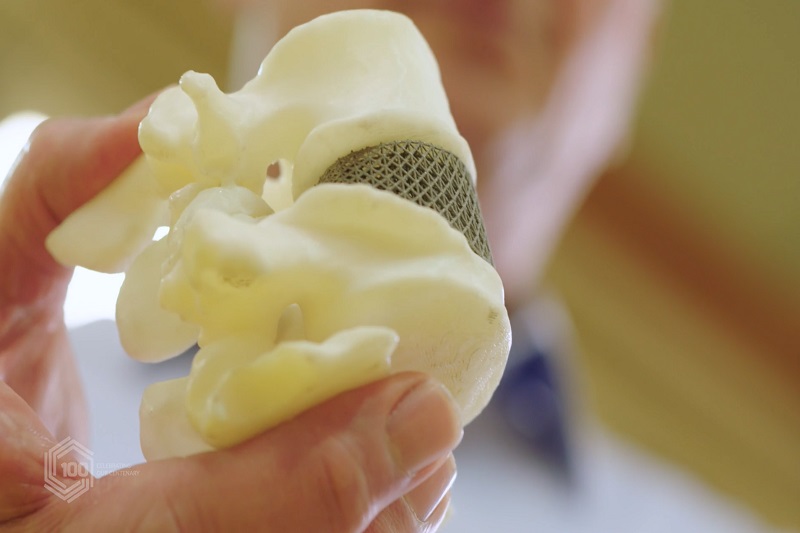
The Technical Director of RMIT University’s Advanced Manufacturing Precinct is being recognised for the impact of his work.
The recognition is reserved for engineers who have ’pushed boundaries, defied odds, and came up with innovations that no-one could have imagined 100 years ago’.
3D printed spinal implant
According to a recent press release, he led the research into Australia’s first locally-made 3D printed spinal implant, which was successfully delivered to a patient in 2015.
The patient was born with a rare spinal defect that stops one vertebra from fully forming. This has affected the patient’s quality of, slumping it to a ‘zero out of 10’, while the pain was an ’11 out of 10’.
There were commercially available spinal implants. However, they did not fit the specific gap in the patient’s spine, thereby becoming unsuitable.
This led researchers from the University and a medical implant producer and neurosurgeon to team up in order to print and insert custom designed implant specifically for the patient.
The project only had a short time frame which covered design, manufacture and implantation within six weeks.
The Technical Director shared that the design had to be of non-uniform structure that was able to support someone’s full body weight. This presented a significant challenge.
However, they eventually produced a lattice titanium cage that would do just that.
They used RMIT-developed software tools and 3D laser printers to build the implant, layer by layer, from titanium metal powder.
Successful project
The operation was a success. The patient started walking merely days into rehabilitation. A few weeks later, she was almost completely pain free.
The patient feels blessed as the 3D printed piece has given her whole world back.
The relationship with the surgeons and the engineers working together to develop a piece , which is perfect up to the millimetre perfect, to go into her spine was unbelievable.
The successful outcome was just thrilling.
According to the Technical Director, “This was the first such implant printed in Australia and implanted into a patient and research we’d worked on over many years into 3D printing was able to be used in a practical sense.”
Paving the way to new directions
The project’s success has since taken them into a new direction, designing next generation implants for bone cancer patients.
They have collaborated further to 3D-print custom bone replacements where bone cancer tumours have been removed, allowing for as much as possible of the limb to be saved.
Industry collaboration has been the key to value creation at the Advanced Manufacturing Precinct, especially in the areas of biomedical devices, aerospace, defence and mining industries.
They are looking to work with forward-thinking manufacturing companies, independent of size or background, in order to create an environment for innovation and collaboration where everyone can all learn and benefit from the interaction.
















